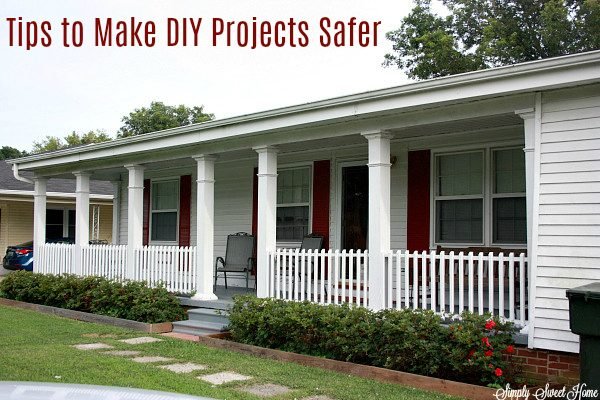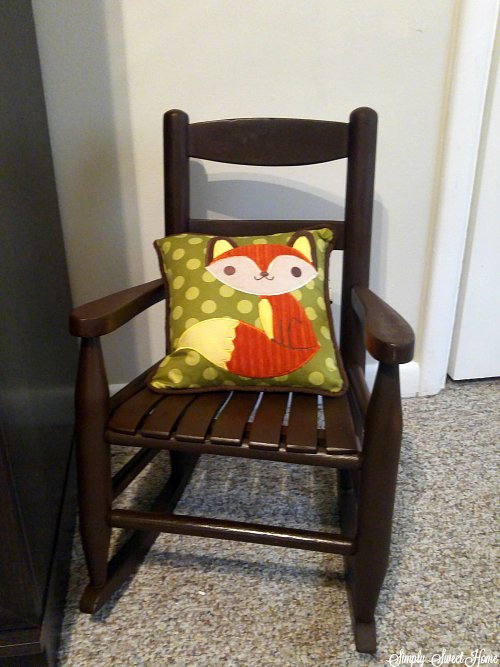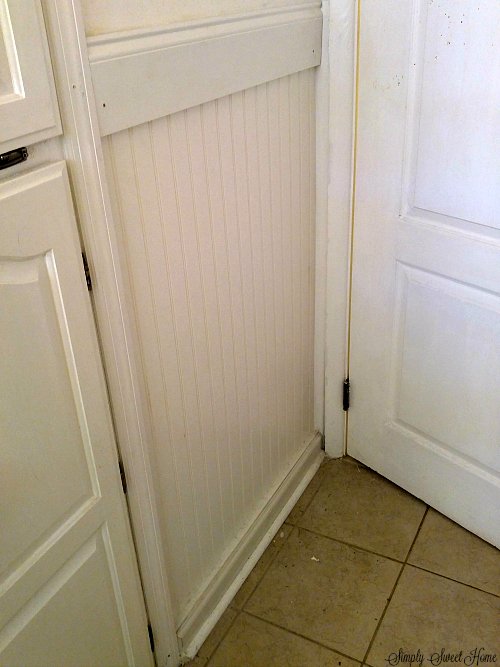
As you know, I always love a good DIY project. Any time my husband and I can fix or build something ourselves, we try to do it, and since we live in an older house, it seems like there is always something to do. In the past few years, we’ve replaced light fixtures, painted and replaced porch rails, had plumbing repairs and installation, assembled furniture, upcycled old furniture, and started a bathroom remodel.
Anytime we start a new project, there are a number of things to consider: What does the project involve? What are the materials needed? How much will it cost? How long will the project take? What are the potential roadblocks to the project? Answering all of these questions can help us to better plan the project and ensure that the project is completed in a timely and efficient manner.
But beyond these questions, you should also consider the risks associated with the project. Does the project involve any health risks? What safety precautions should be taken to avoid injury or other bodily harm? As an expectant parent and a pet owner, I have to take extra precautions to make sure everyone in our home is protected. The following infographic gives us a a little insight into the views of fellow DIYers and it details some of the risks involved with home improvement and do-it-yourself projects. Check it out!

To help you identify and avoid potential risks of common DIY projects, I will discuss a few projects we have a completed.

Furniture Restoration
Although furniture restoration may seem like a task with little to no risks, it actually can have its dangers, and safety precautions should be taken.
Risks
In most, cases when we restore old furniture, we have to do a little sanding to remove paint and lacquer or to smooth out the rough edges. Whether your able to use a piece of sand paper or a sand block to sand your piece, or whether you have to use an electric sander, this process creates a lot of dust in the air. Not only could the dust be from the wood, but it could also be from any paint or chemicals that have been on the wood. These fine particles can cause a lot of problems for your health, from basic allergy symptoms, to more serious lung disease, as well as eye injury.
After the sanding process is completed, you have to stain, paint, or otherwise treat the piece you are working on. The chemicals used for these projects can be very dangerous. Some may have skin irritants which may burn you if they are spilled, and breathing in the fumes from these chemicals can cause immediate injury and well as long term health problems.
Safety Precautions to Take
When completing a furniture restoration, it is important to wear personal protective equipment. Goggles or safety glasses will protect your eyes from tiny particles and chemicals. Long pants, long sleeves, and gloves should be worn to protect your skin, and a face mask should be worn over the mouth and nose to protect your lungs.

Electrical Work
We’ve done several quick projects that involve electrical work. We’ve installed new ceiling fans and light fixtures. And we are in the process of changing out all of our old plug ins and light switches with new ones. These are fairly simple and quick projects to take on if you know what you are doing, but any time you are working with electrical wiring, there are obvious dangers.
Risks
The most obvious danger to worry about it when doing any kind of electrical project is that you could be electrocuted. If you are installing new light fixtures or fans, you also have to worry objects falling on you, and you have to be careful to avoid falling off the ladder.
Safety Precautions to Take
Anytime you do electrical work, you should first turn off the breaker. You may have to flip a few breakers to determine which one needs to be turned off. After the breaker is turned off you should use a electrical tester or a multimeter to make sure there is no electricity flowing through the area where you are about to work. You should also work with one hand. If you touch two wires and once, it can create a current through your body. You can also wear nonconductive gloves.
When doing any kind of electrical project, it is good to have an assistant. This is especially true when installing a new light or ceiling fan. A helper can assist you by handing you tools while you are on the ladder or helping you to lift the new fixture for safe mounting. He can also hold the ladder to help you avoid a fall.

Tile Removal and Wall Restoration
Currently we are in the process of remodeling our bathroom. The most difficult and painstaking task has been removing the old tile wall, which we are replacing with wainscoting. Anytime you knock down a wall or remove something from a wall, you never know what you are going to find on the inside. (In our case, we live in an old home, and behind the wall we a large piece of metal mesh material, and a whole lot of concrete. Apart from removing the tile, all the concrete and metal mesh had to be removed.)
Risks
The removal of tile, concrete, dry wall, wood or any other material, using a sledge hammer or other tools, can obviously put a lot of dust and other particles in the air, which are dangerous for your eyes and your lung health. Additionally you may have asbestos in your home, which can cause mesothelioma, a form of cancer that starts in the lining of the lungs. As you remove tile or dry wall, you may also find black mold, or even popcorn ceilings with mold, which can cause sinus problems, mold-induced asthma, and even neurological problems.
Safety Precautions to Take
As with other projects it is important to wear the proper clothing and personal protective equipment when you are removing walls and wall covering or restoring walls. You should wear safety glasses, gloves, and a face mask. It may also be necessary to wear long sleeves and long pants. This will help to protect you from dust and other foreign matter than can be hazardous to your health.
If your live in an older home, it may also be necessary to bring in a professional to check for and remove the asbestos before the project is done. If you find black mold, you should also call in professional to remove the mold.

Doing home improvement projects yourself can definitely help you to save money, but safety should always be your number one concern. Before completing any project, you should always research and assess the risk, and take any precautions necessary to avoid risks to your health.
For more information on the risks associated with home improvement and DIY check out slatergordon.co.uk.


[…] areas with pictures, drawings, and achievements your family have been involved with. As this grows and develops over time, you will have a clear mural dedicated to the family that you couldn’t do […]